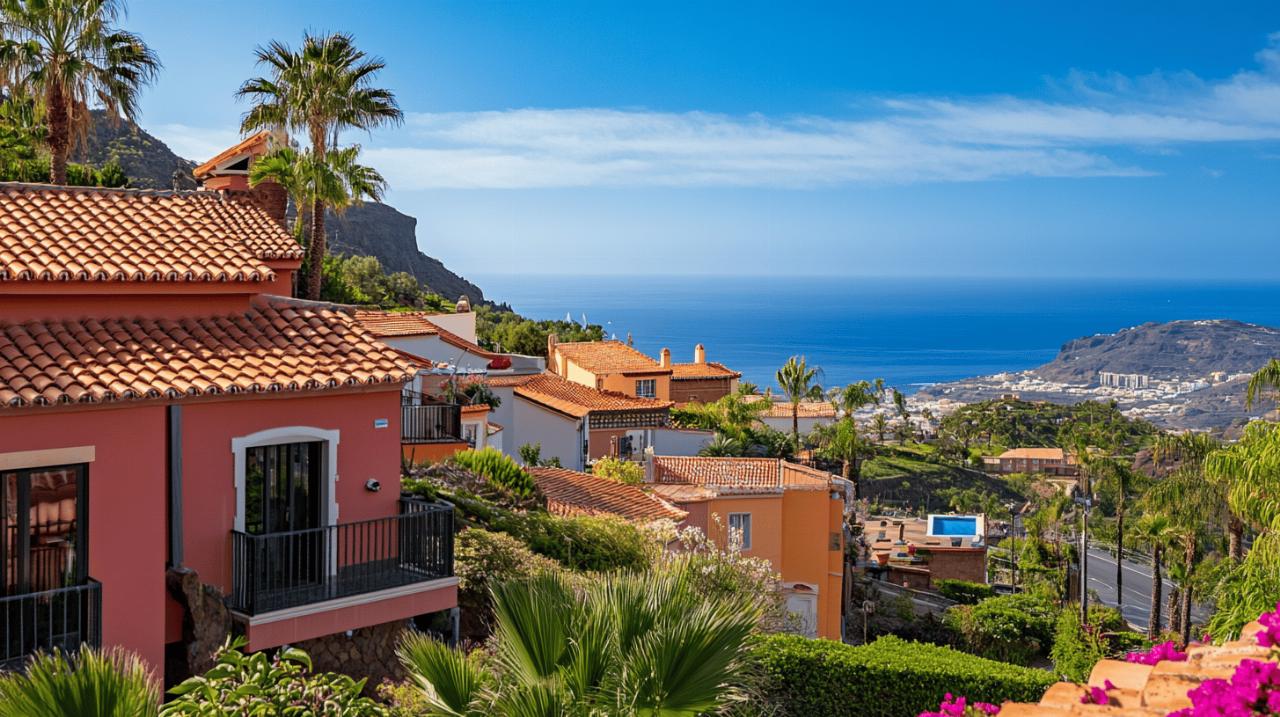The Canary Islands, with their year-round sunshine and stunning landscapes, have become an increasingly attractive destination for property investors. This Spanish archipelago off the northwestern coast of Africa offers a unique combination of natural beauty, stable economy, and favourable tax conditions that continue to draw international buyers. The property market has seen remarkable growth in recent years, making it an opportune time to explore investment possibilities across these diverse islands.
Current Property Market Trends in the Canary Islands
The real estate landscape in the Canary Islands is experiencing a significant boom in 2025, with property values having increased by an impressive 47% over the last five years. According to market analyses from Canary Island Property World, a leading resource for real estate information in the region, prices are currently hovering around €2,800-€3,300 per square metre. Experts are forecasting continued growth, with predictions of an 8-12% price increase through the remainder of 2025 and a steady 6-10% annual rise expected until at least 2027.
This sustained growth reflects the strong demand from both local and international buyers. In fact, approximately 70% of property purchases are made by foreign investors seeking lifestyle improvements combined with sound financial returns. A typical 90-square-metre home that cost €147,029 in 2019 now commands around €216,038, demonstrating the market's robust appreciation.
Price variations across different islands
While the Canary Islands as a whole presents promising investment opportunities, significant price variations exist between the different islands. Tenerife and Gran Canaria, being the most developed and tourist-friendly islands, generally command the highest property prices. Prime locations in these islands, such as Costa Adeje in Tenerife and Maspalomas in Gran Canaria, are particularly sought after for their amenities, infrastructure, and rental potential.
In contrast, emerging hotspots like La Palma, El Hierro, and Fuerteventura offer more affordable entry points into the market. These islands are gaining attention for their unspoiled natural beauty, developing infrastructure, and growth potential. Property prices in these areas remain considerably lower than their more established counterparts, making them attractive for investors looking for value appreciation opportunities. The ongoing infrastructure developments in these regions are steadily enhancing property values and attracting a new wave of buyers.
Popular locations attracting foreign investors
Certain areas across the Canary Islands have become magnets for international property investors. In Tenerife, the southern regions of Costa Adeje and Los Cristianos continue to attract buyers looking for short-term rental opportunities with strong tourism demand. These areas boast modern amenities, beautiful beaches, and a vibrant atmosphere that appeals to holiday-makers throughout the year.
Gran Canaria offers excellent options for both residential and commercial investments, with areas like Puerto Rico and Maspalomas proving particularly popular. Lanzarote has carved out a niche in the eco-tourism and luxury markets, appealing to environmentally conscious investors and those targeting the high-end holiday segment. The island's unique volcanic landscape and commitment to sustainable development have created distinctive investment opportunities.
Fuerteventura, with its stunning beaches and relaxed lifestyle, has become a favourite for those seeking vacation homes or rental properties catering to beach enthusiasts. Meanwhile, La Palma, often referred to as the 'beautiful island', is increasingly recognised as a hidden gem with significant long-term investment potential, particularly for eco-friendly developments aligned with the island's natural character.
Investment strategies for canary islands properties
Developing an effective investment strategy is crucial for success in the Canary Islands property market. With various options available, from residential apartments starting at €150,000 to houses from €250,000 and building plots from €100,000, investors need to carefully consider their financial goals, risk tolerance, and preferred level of involvement.
The buying process typically takes between 8-12 weeks and involves several steps. Prospective buyers need to obtain an NIE number (tax identification number for foreigners) and set up a Spanish bank account. When making an offer, a reservation contract usually requires a 10% deposit. Additional costs include a property transfer tax of 6-10% of the property value, with total purchase costs adding approximately 10-12% to the price. Understanding these requirements and costs is essential for developing a comprehensive investment plan.
Long-term rental yield potential
The Canary Islands offer compelling opportunities for long-term rental investments. The growing presence of digital nomads and remote workers seeking reliable internet connections and comfortable living spaces has created a steady demand for long-term rentals across the islands. This trend has been accelerated by the pandemic, which prompted many professionals to reconsider their living arrangements and embrace remote work in locations offering a high quality of life.
Investors focused on the long-term rental market should consider properties in residential areas with good amenities and connectivity. While rental yields may be slightly lower than those from short-term holiday lets, they offer greater stability and require less intensive management. Additionally, mortgage payments are generally €200-600 less than rental costs for similar properties, making buying an economically sound decision for those planning to stay longer than three years.
Property management services, such as those offered by agencies like ACM Prime, can handle maintenance and tenant relations for investors who prefer a hands-off approach. These services are particularly valuable for foreign investors who cannot regularly visit their properties.
Holiday letting and tourism-focused investments
Tourism remains the driving force behind the Canary Islands economy, creating substantial opportunities for holiday rental investments. With year-round sunshine and a steady influx of visitors from Europe and beyond, well-located properties can generate rental returns of up to 7% for short-term lets, significantly higher than many other European destinations.
Investors targeting the holiday rental market should be aware of recent regulatory changes. As of July 2025, new rules for short-term rentals require official registration, aimed at better regulating the sector. Tourist rental licenses are now mandatory for short-term vacation rentals, and compliance with these regulations is essential for legal operation.
The best locations for tourism-focused investments include coastal areas with easy beach access and popular tourist amenities. Properties with desirable features such as sea views, swimming pools, and modern furnishings can command premium rental rates. Luxury properties, particularly in Tenerife and Gran Canaria, are experiencing high demand and can offer attractive returns for investors willing to enter this higher-priced segment.
In conclusion, the Canary Islands present diverse and promising real estate investment opportunities in 2025. With a stable market showing steady price appreciation, favourable tax conditions, and strong rental demand driven by tourism and remote workers, the archipelago offers potential for both capital growth and rental income. By carefully selecting the right location and property type, and developing a clear investment strategy, investors can tap into this dynamic market and potentially secure significant returns.

